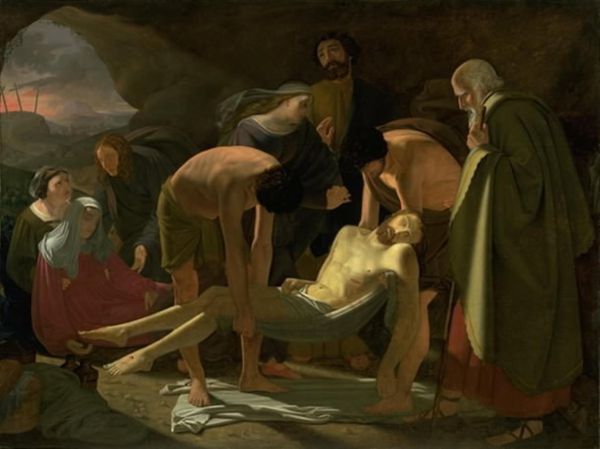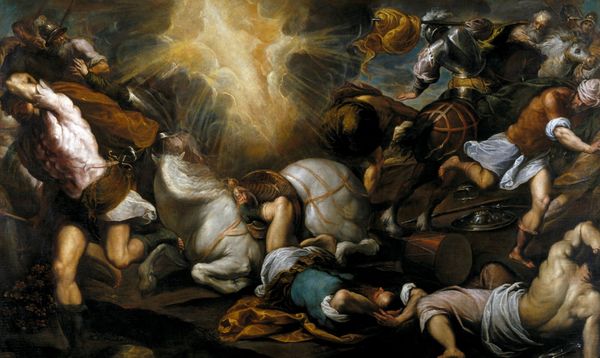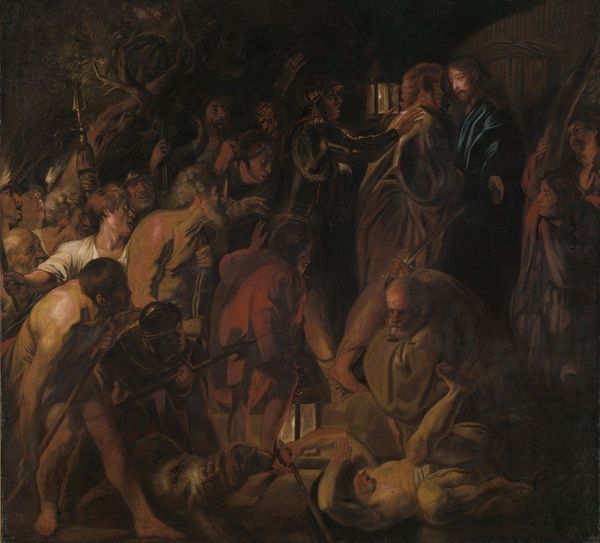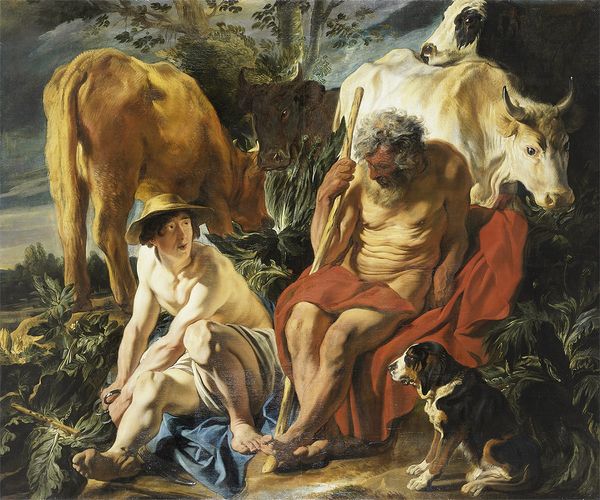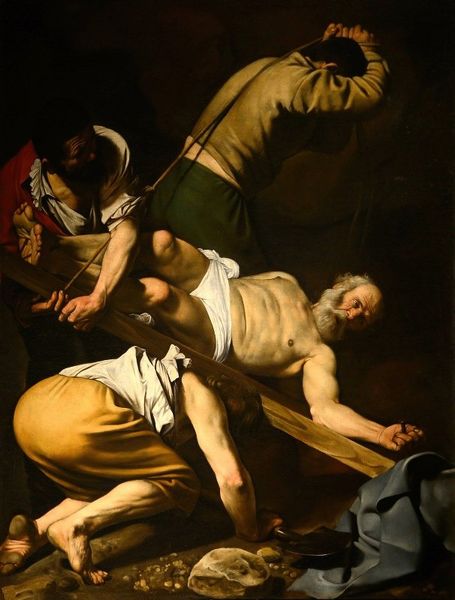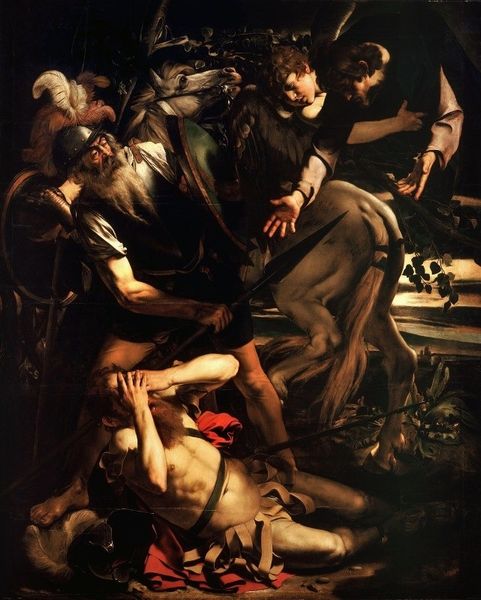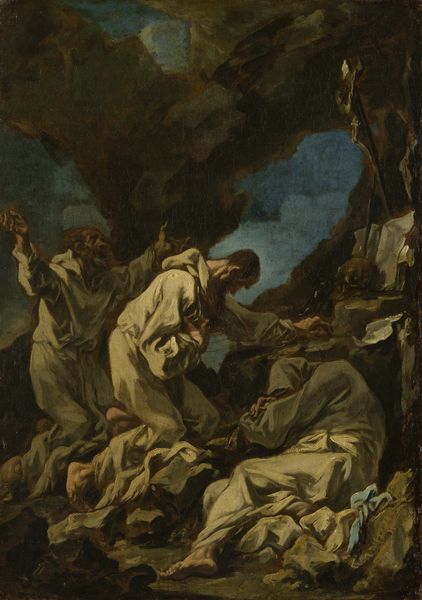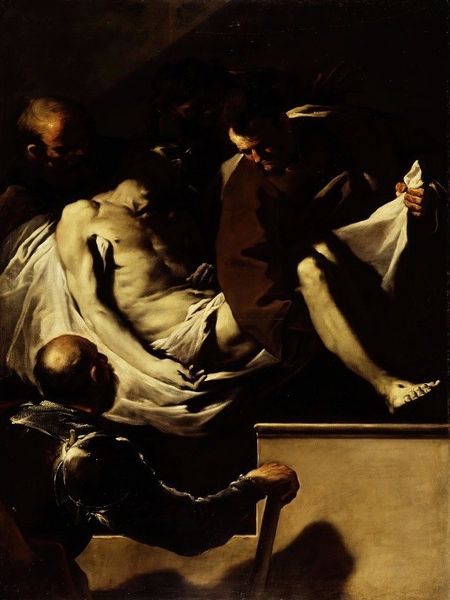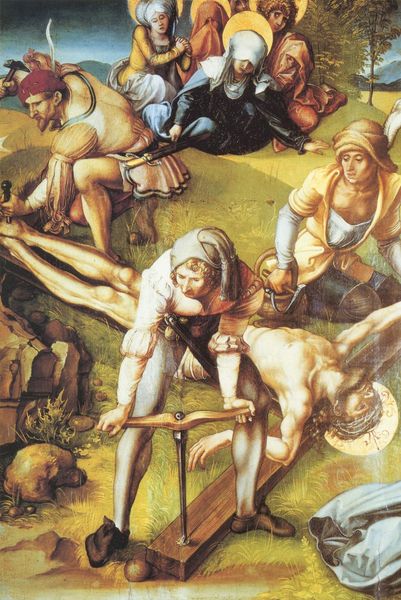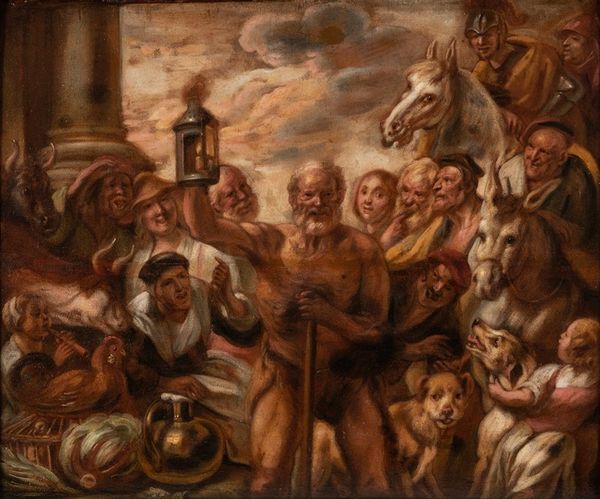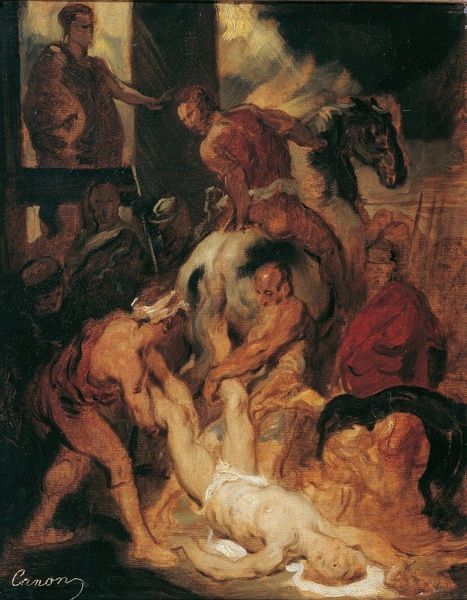
oil-paint
#
allegory
#
baroque
#
oil-paint
#
figuration
#
oil painting
#
history-painting
#
realism
Copyright: Public Domain: Artvee
Caravaggio’s painting, Conversion of Saint Paul, is made with oil paint, a material consisting of pigments suspended in drying oil. What’s interesting here is Caravaggio’s engagement with materiality through his working method. The ‘conversion’ of Saint Paul wasn’t just the subject matter, but also happened in the studio. As he built up layer upon layer of pigment, light became a tangible substance, illuminating figures that emerge dramatically from the darkness. His use of impasto, applying paint thickly, gives the surface a palpable texture. This isn’t just representation; it’s almost a sculptural approach. Caravaggio was renowned for his naturalism, his ability to capture the raw essence of the human form, using models that would typically be found in the street. Yet, his art wasn’t just about appearances. It’s about a whole process that brings paint, the artist's body and the viewer’s eye together in an experience. Through attention to material and making, Caravaggio challenges traditional distinctions between illusion and reality.
Comments
No comments
Be the first to comment and join the conversation on the ultimate creative platform.
